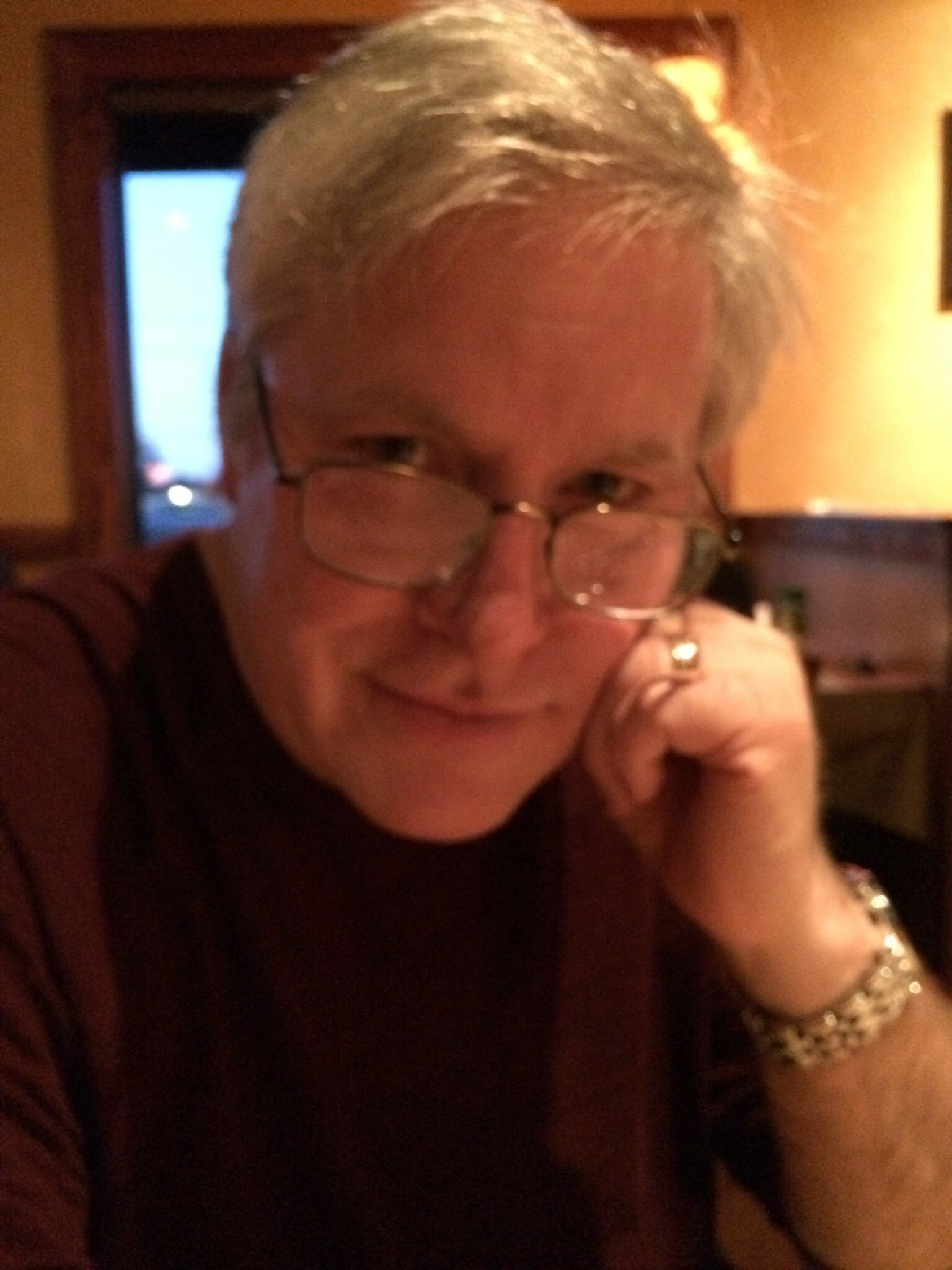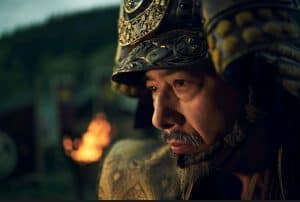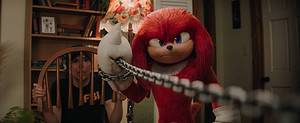
It would take more space than we have allotted to mention the accomplishments of our next guest. During his career, he has written for the Washington Post, Rolling Stone, and Esquire among others. In addition, he has profiled such diverse celebrities as Marlon Brando, Jack Nicholson, Robert De Niro, Brad Pitt, Angelina Jolie, Kirk Douglas, Julia Child, Ray Charles, Faye Dunaway, Evel Knievel, and more. And if that wasn’t enough, somewhere along the way, he also has published numerous books. These include Wounded Warriors: Those for Whom the War Never Ends, Scary Monsters and Super Freaks: Stories of Sex, Drugs, Rock ’n’ Roll, and Murder, and Revenge of the Donut Boys: True Stories of Lust, Fame, Survival and Multiple Personality.
Recently, he has partnered with publisher NeoText on a book about the life (and death) of controversial Shaman or “sham-man” (according to some) Carlos Casteneda. Because our conversation covered so much ground (and because Mike is a great storyteller) this is Part One of Mike’s Interview. Be sure to stay tuned for Part Two, coming soon.
However, you can’t have a Part Two, without a Part One. With that in mind, GeekVibesNation is proud to welcome Mike Sager to GeekVibes Live Interview. Thank you very much for sparing some time for us, Mike.
The Beginning
GVL: So let’s give our readers a little bit of background. You were born in Virginia but mostly raised in Baltimore. What was your life like as a kid?
MS: I was that kid with a ball or lacrosse stick in his hand, or riding all over creation on my bicycle (carrying the same to go play a game somewhere). For a while I had one of those cool Stingrays with the ape-hanger handlebars and the banana seat, small wheel in front, big in back. I’d put playing cards on the spokes with my mother’s clothespins to make the approximate muffler noise. I liked to go fast and jump over things on my bike so I wiped out a lot. I also fell off my first gen skateboard a lot. It had metal roller-skate wheels screwed into a piece of wood. Once I got stitches in my elbow and knocked them out two more times. After the second re-injury, my parents were like, Put a bandaid on it Michael, we’re not taking you back to the emergency room.
GVL: My childhood was similar, except if I had an accident, my parents would ask if I was all right and if I said I was, they would then tell me how stupid I was for whatever I did. And they were right…darn it. What books captured your interests back then?
MS: The first books I remember reading on my own in the library at Wellwood Elementary school were a series of first-person youth novels about car racing. The characters raced little British sports cars, like MGs and Triumphs. I’ve tried to track the series down, haven’t found them, don’t care that much. But they got me interested in reading books that were not boring. . . or maybe it showed me that writing didn’t have to be the boring stuff in school.
I remember taking down a book from my parents bookshelf—besides the trio of huge graphic coffee-table books on World War II and another book called, I think, the Ascent of Man. This book included photos of mummies and ancient frozen tribesmen and Mammoths and such. Among them were three especially influential works. One was Paper Lion, by George Plimpton, an early form of immersion journalism where this soon-to-be-famous Ivy League writer-guy joins the Detroit Lions football team and tries to play quarterback in a real live National Football League Game.
Then I remember reading Philip Roth’s classic Portnoy’s Complaint, which should be required reading for every Jewish 12 year old. There were some rather blue parts in there, which was thrilling. I also remember finding on the same shelf in the den a copy of the classic Fear of Flying by Erica Jong. It was there I first learned about “the zipless fuck.” (A phenomena that I came to recognize, later in my teens, as a favorite form of interpersonal communication between romantically inclined couples during the late sixties and early seventies.)
Support System
GVL: Well, I have to be honest, the only book I am familiar with among those is Paper Lion. I read George Plimpton’s book after seeing the film with Alan Alda. Of course, I’m not that well read. So, during those formative years, was there anyone who took an interest in your writing? Someone who encouraged you to possibly pursue your interest?
MS: My mother was my first editor. She typed and edited my papers. She was a liberal arts major (philosophy and mythology). According to Bev Sager, she was one of only a few women in her college class who actually graduated. “Everybody else quit as soon as they found a husband,” she says. From my mom I also got my eye for detail and my sense of intuition. From most of my early teachers I got nothing but scolding. I couldn’t memorize math tables. My penmanship was “terrible.” My spelling was “atrocious.” I spent much of the third grade year sitting in front of the class, with my desk pushed against the teacher’s. Mrs Walston. She had a beehive hairdo and buck teeth. In general, I dedicate all my successes to her and the others at Wellwood. I don’t think anybody achieves success without some little chip on their shoulder at least.
In the midst of my C student’s slog through the middle years, I was blessed by the attentions in 11th and 12th grade of my high school journalism teacher. Dora Simons really encouraged me. I couldn’t spell so well but it turned out I was pretty creative. Of course, I will always wonder if it was actually my work that first attracted Mrs. Simons attention. After high school, I would learn that Mrs. Simons was a longtime patient of my father, an obstetrician. Ours was a small enclave. Lots of people knew my dad. He’d delivered both of Mrs. Simons’ kids, and many others as well. From him I think I inherited my way with people—a talent for listening, for caring, for helping which derives from something deep and real. To this day I remain in touch with Mrs. Simons. Last year about this time, when I was back in Baltimore, we had lunch at a local deli.
First Professional Break
GVL: Its nice that you keep in contact. At what point did you get your first professional break and how did that come about?
MS: Three weeks into classes at Georgetown University law school in Washington D.C., I realized how much I wanted to be … a writer. So I quit. Then I lied to my parents—I assured them a deferred admission to the following year’s class had been easily secured.
I had only one writing contact—the mother of a fraternity brother at Emory University happened to be an editor at the Washington Post. At my first interview with the human relations department, I failed my spelling and typing tests and they turned me down.
Not Giving Up
Several dozen desperate phone calls followed over the next month before I finally landed a full-time spot as a copy boy on the graveyard shift. My assigned post—which required no spelling or typing—was a closet-sized space that housed some fourteen news service teletype machines (AP, UPI, Reuters, and others). Before mobile phones and the Internet changed newspaper reporting forever, the wire room was how news-gathering organizations kept up with worldwide events. The cacophony of sound emanating from the printing machines—the hammering, sawing, buzzing, and dinging—was deafening. There was a metal bar stool and a large window at the front of the room, which gave Sager a front seat to the daily drama at one of the best newspapers in the world.
There’s a long story about how I was promoted eleven months later from copy boy to staff writer by Bob Woodward. Woodward, by the way, is the author of a new book about President Donald Trump, Rage, his 18th. He pulled the trigger that started my career in earnest.
Bob Woodward
GVL: Well you’ve got my attention now. Please continue.
MS: Back then Woodward and his partner, Carl Bernstein, were fresh off their work ousting a crooked president (Richard Nixon) from office. By the time I arrived at the Post, Bernstein was gone. Woodward, perhaps being groomed for the highest job at the paper, Editor in Chief, had been made head of the local new department of the paper, called Metro.
I was working nights as a copy boy and days chasing stories. One night, the phone at the city desk rang and I answered it. A whistleblower from the Department of Agriculture was on the other end. I took the tip. I went after it.
Shortly thereafter, my first front page story sparked a government investigation. The day of the story, Woodward called me into his office and hired me to the staff. The next five years were incredibly heady times. I like to say that working at the Washington Post was, to me, going through grad school and a first marriage all at once. Like a high school basketball player who suddenly finds himself on the All Star team.
Rolling Stone
I worked with incredible people who knew what they were doing, the best in the business. During that time, I soaked up every single thing I could. And everything I’ve done after my time at the Post has its origins there. After six years at the Post, seeking to write more literary stories, I left to try my hand at freelance magazine writing. Two years later, I landed at Rolling Stone, where I’d stay six more years and write a number of memorable stories, including the article about porn star John Holmes and the Wonderland Murders that inspired the movies Boogie Nights and Wonderland.
Marlon Brando
GVL: You have done interviews with many huge stars. Was there anyone who proved to be different than you had imagined? I’m not asking for anyone specific, but in general. Did it ever make you rethink your approach?
MS: My first huge celebrity story was called “Hunting Marlon Brando.” It will be the title story of my next collection, which brings together many of my greatest stories: my time spent with kids in the ghetto fighting pitbull dogs, living with a crack gang, with a 650 pound man, with Kobe Bryant and many more.
After I left the Post, the paper started a new Sunday magazine, and the new editor gave me an assignment. It was pretty simple and very crazy. “Why don’t you go to Tahiti and find Marlon Brando.” It was crazy. And I was almost guaranteed to fail. But it was November in Washington, winter was coming… I went for it.
Anyway, I had to interview Marlon Brando but he hated the press. So I was kind of on a doomed mission to start. At the time, I was 27, just freed from the bonds of the huge institution that had raised me. And I was questioning some of the values of journalism. I thought newspapers were too black and white. By going to magazines, I was looking to practice a type of journalism that led to deeper meaning. Kind of rebelling a little bit, I guess, from Mommy and Daddy Post.
After giving it some thought, I developed a kind of thesis for my mission, my only real chance, as I saw it. If Marlon hates reporters, I told myself, I can’t act like a reporter. I have to act like a decent human being. It’s right there in the story several times. And it ran like that in the Post, all 14,000 words. The powers at the Washington Post didn’t love that sentiment; some openly disdained it. I mean, here was this former staffer being sent to Tahiti in the wintertime, talking shit about the press.
Do Onto Others
Since Marlon, that is essentially my mantra for every story since. A kind of “Do Unto Others” philosophy of journalism. After all, without my sources I have no story. So I treat every person with respect. No matter how low down guilty, or just plain weird or different. I hope it has also spilled over into my personal life. At least I do try. I know it has helped with my stories. Some critics have written that I bring humanity to my stories. Even crack gang members have a life and a family and people they love. Same for the guys who murdered 12 Buddhist monks.
Over time, I have added to this the notion of what I call Suspending Disbelief. Meaning you put your own beliefs and emotions on the back burner long enough to be able to understand what other people are about, even when they feel abhorrent to you.
GVL: That sound’s difficult. But it appears to work for you.
MS: This is how I—a Jewish person with a Black son—can pass several days inside the Aryans Nation compound in Idaho, or inside a Palestinian refugee camp in Gaza. When I am with people, I try to open my mind and suspend my judgements, and to treat everyone with respect.
Later, when I get home and get ready to write, I put my critical lens back on. But in the process, I have gained insight I would have never had otherwise. One thing is clear: If you hate the person talking on television, and all you do is yell back at him the whole time, you won’t ever hear what he’s saying. I think it’s important to listen. Nothing should be outright cancelled. All should first be considered rationally. The facts must be gathered before judgement can be made. Once so-educated, a judgement is better informed.
 The Sager Group
The Sager Group
GVL: You had worked for the Washington Post and had begun your freelance work. So when you established The Sager Group in 1984, what were your initial thoughts upon its creation? What were your goals?
MS: In 1984, The Sager Group was born in my mind. I had just started freelancing. For the first six years, my name was, basically, “Mike Sager from the Washington Post.” Now I was just plain old Mike Sager.
I was having a little bit of a beef with the editor at the Washington Post who later assigned me Marlon. It was about money. As a freelancer you have to learn to stand up for yourself because nobody’s gonna give you what you don’t ask for. Here I was, just a punk freelancer, one of the zillions. Walking to the Post to have a meeting with the guy and to iron things out, I said to myself, “Well, he might be the editor of the Washington Post magazine but I . . . am the President of The Sager Group.” Soon after, I got a Federal Express account in the name of The Sager Group. For many years, that was it.
GVL: Self-Promotion never hurts. My wife has a sign on her desk declaring herself Queen of the World. So when did publishing become a part of the “Sager Group?”
MS: Then, around 2010, I started getting into publishing. I knew immediately what my company would be called. To me, The Sager Group creates a way of gaining a small island of control over my own work. For 3 decades, I always worked at the pleasure of the boss. I jumped through hoops. I jumped higher. Always doing what they wanted me to do. I tried to do my thing within the parameters of what they wanted.
But over time, my years and years as an artist taught me that nobody really knows with absolute certainty what’s good. It’s all opinion. All marketing. It’s a whole belief system of gatekeepers, college programs, contacts. At a certain point, you feel as an artist that none of those people really know better what is art than you do yourself. It’s just their opinion. But as long as they’re the ones giving you the cash, you have to live with it.
Learning from Ice Cube
I wanted the power to say yes and no. I once wrote about the seminal rapper Ice Cube. During that interview, I spent about four months with him. At the time, he was doing his first album post NWA. He’s the one from whom I’ve appropriated the phrase that guides my company: Harnessing the Means of Production. Back then, rappers were breaking away from major labels and starting their own. It’s kind of the same. It just took writers a lot longer to do it. And now anybody can do it, but not so many people can do it well. To me, that’s what matters. Doing it well.
Also contributing to the formalization of TSG was the rise of the internet coupled with the death knell of legacy media. Just as I was starting my own publishing brand, the industry which had fed me and helped raise my family for 35 years was doing a nosedive. As a writer, I am driven to create. It’s write or die. It’s find a way. Using what you have, using your creativity to make things happen. TSG makes things happen. It’s like being a god on a tiny planet that exists only in my home office.
The Evolution of The Sager Group
GVL: So what has changed since you started the Sager Group?
MS: The Sager Group has evolved over the past 10 years into a multi-media content brand that, first of all, puts artists to work. In doing so, we use our combined talents to empower people who create. In essence, to be an umbrella beneath which makers can pursue, and profit from, their craft directly, without gatekeepers. We publish books and eBooks and create audio books. We also minister to artists and provide modest grants (a fond outcropping of my many years mentoring and teaching). In addition, we design THC and CBD logos and packaging (to make a little extra scratch to float the company). Finally, under the direction of my son, Miles Sager, we produce documentary, narrative and commercial films and music videos. At the end of the day I hope we help artists help themselves— I have helped myself by pursuing this.
Another thing Ice Cube once told me: “Ain’t nobody givin up no ass.” I took that to mean: You want something, you gotta go do it yourself. Or at least start the process and see what turns up. That’s what we do at The Sager Group.
GVL: This is part one of our talk with Mike Sager. In Part Two, we will discuss his partnership with NeoText and his first book with them: SHAMAN, The Mysterious Life and Impeccable Death of Carlos Castaneda. Be sure to come back for Part Two, here at GeekVibesNation.

Senior Writer at GeekVibesNation – I am a 50 something child of the 70’s who admits to being a Star Trek/Star Wars/Comic Book junkie who once dove head first over a cliff (Ok, it was a small hill) to try to rescue his Fantastic Four comic from a watery grave. I am married to a lovely woman who is as crazy as I am and the proud parent of a 18 year old boy with autism. My wife and son are my real heroes.







